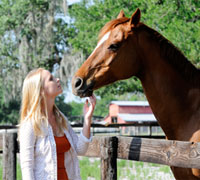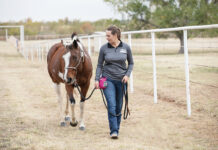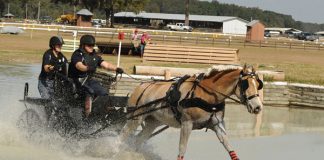 Purchasing a horse is a major decision that shouldn’t be taken lightly. If you’ve done some soul-searching and decided the time is right to buy a horse, it pays to be as prepared as possible before getting in the car for a road trip to evaluate the candidates.
Purchasing a horse is a major decision that shouldn’t be taken lightly. If you’ve done some soul-searching and decided the time is right to buy a horse, it pays to be as prepared as possible before getting in the car for a road trip to evaluate the candidates.
1. Preparation for Ownership
- Where will you keep the horse? If you don’t have your own farm with safe stalls and fencing, then it will take time to tour some possible boarding barns. Safe facilities and convenience are two of the biggest factors to consider when finding a barn you will be happy driving to all the time.
- Vet, farrier and trainer: The next numbers to get on your speed-dial are a reputable vet, farrier and trainer. You may already have these in place if you’ve owned a horse before; if not, you can check with other horse owners in your area or even tack shops for recommendations.
2. Decide What Type of Horse You Need
It is very easy to be swayed by a pretty face or a fancy trot. But a lot of the “high-octane” horses that catch the eye are not suitable for your average rider. Many people overlook sound teenage and senior horses because of age, but they often have the mileage and steady temperaments that make them invaluable partners with many more years of usefulness left to give.
3. Finding a Horse
There are three main ways to find horses: word of mouth, the Internet, and fliers and circulars at shows or tack shops. Word of mouth is often the best way to go, particularly if your trainer is helping you look and knows what you need more than you do. She can talk to other trainer friends, or find out about horses for sale at shows.
If you want to scour Internet horse-for-sale sites, beware of anything that sounds too good to be true, especially if it has a low price tag. Videos are a great tool for thinning down the possibilities; if the horse can walk, trot and canter calmly in both directions, he may already be ahead of many other candidates. (Of course, videos can also cut out the first hour of bad behavior if a horse is prone to it.)
If looking at fliers or ads in a circular, you’ll have just photos and description to go by. If the horse sounds like just what you’re looking for, he might be worth a look.
4. Test Ride
Once you’ve narrowed down the list to horses you want to test ride, give the seller a call and be very honest about your riding ability and goals for the horse; often, sellers will want to match their horse up with the best possible home and are surprisingly honest about the horse’s suitability. Of course, there will always be unscrupulous dealers who will tell you the sky is purple if it helps get a horse sold. That’s why it pays to bring your trainer or a very experienced horsey friend when you go look at a horse.
Always watch the seller ride the horse first, in case he turns out to be a danger to himself or the rider. This will also let you evaluate the horse’s paces from the ground. If everything looks good, mount up and give him a try. If you are interested in jumping or trail riding, for example, you may want to try those things after your initial work on the flat in a ring.
If you plan to offer less money than the horse’s listed sale price, this visit is a good time to see if the seller is negotiable, but only if you’re very interested in the horse. Don’t waste sellers’ time by looking at horses that are way out of your budget, hoping to haggle the price down later. Slight flexibility in price is often possible, but not always.
5. Pre Purchase Exam
Once you’ve looked at all the horses you’re interested in and selected your favorite candidate for purchase, be sure to have an equine veterinarian perform a pre purchase exam (PPE) on him. Even if the horse is extremely cheap, the money you spend on this will save you huge vet bills in the future if there is a major problem you can’t see. The vet will listen to his heart and lungs, perform flexion tests on his legs to look for lameness, test his hooves for tenderness, and possibly take X-rays if you want to be extra-thorough.
Although vets are not supposed to “pass” or “fail” a horse based on his PPE, they can advise you as to whether or not the horse is likely to hold up to the purpose you intend to use him for. From there, you can decide if you’re happy to move forward with the purchase. Once the deal is done, be sure to ask for a bill of sale as well as the horse’s health records, and deworming and farrier history.
Be as picky as you need to be in order to find the right horse. Your future happiness depends on it!
Further Reading
Horse Shopping Checklist






I answer alot of questions on Yahoo! Answers about should they buy this horse or that horse, or is this horse OK for them to buy (health or temperment issues). Thank you for putting together this comprehensive, but easy to read list of what to look for, think of and do when considering buying a horse!
i want to lease a horse this summer (super excited hehe!) so this article was pretty helpful.